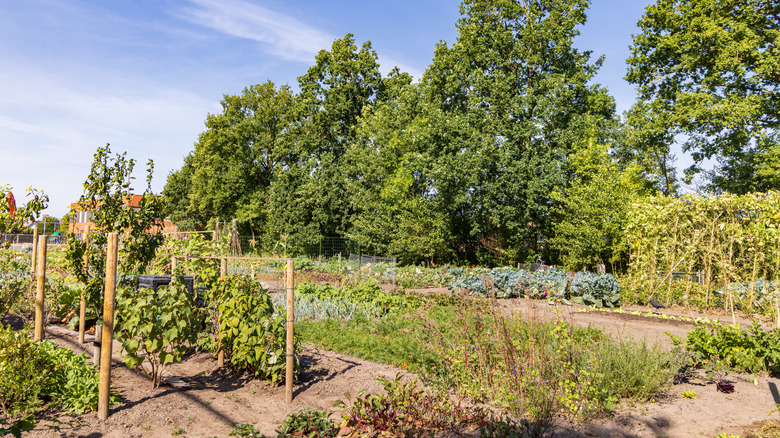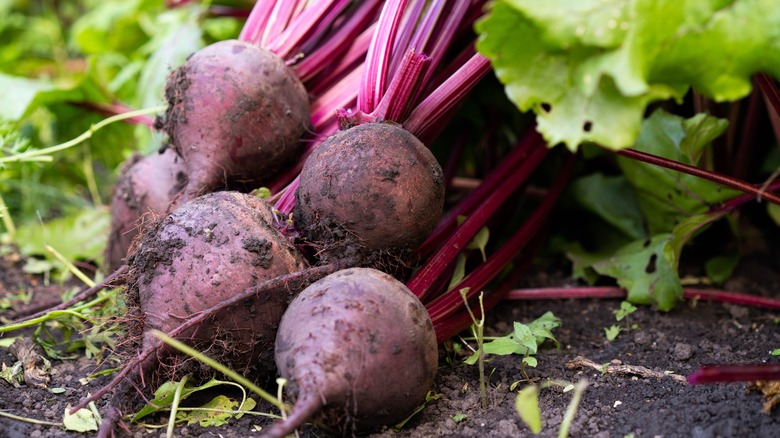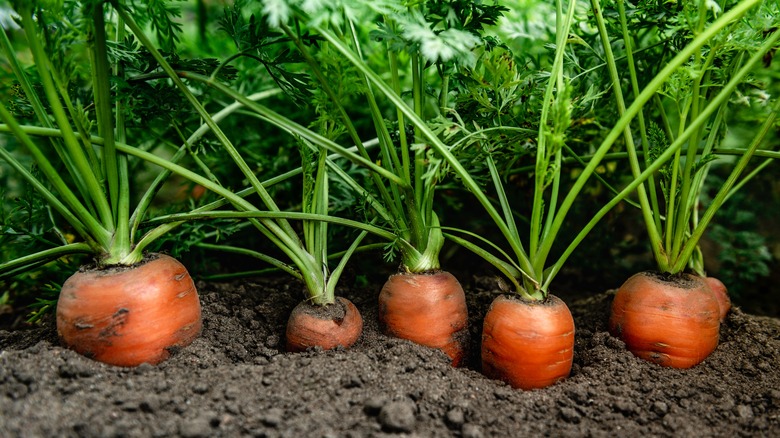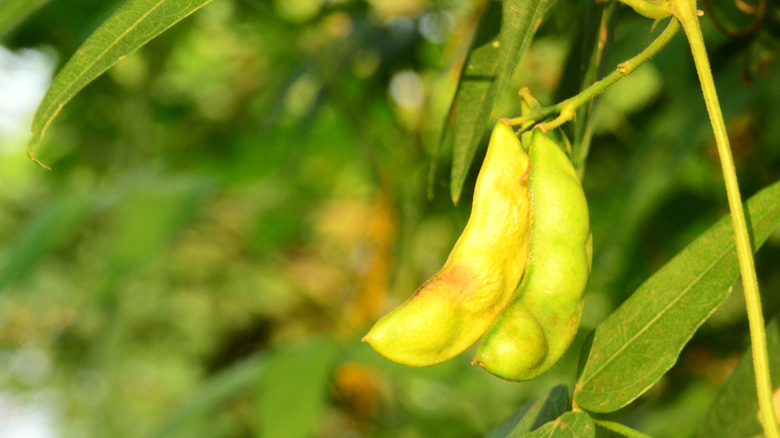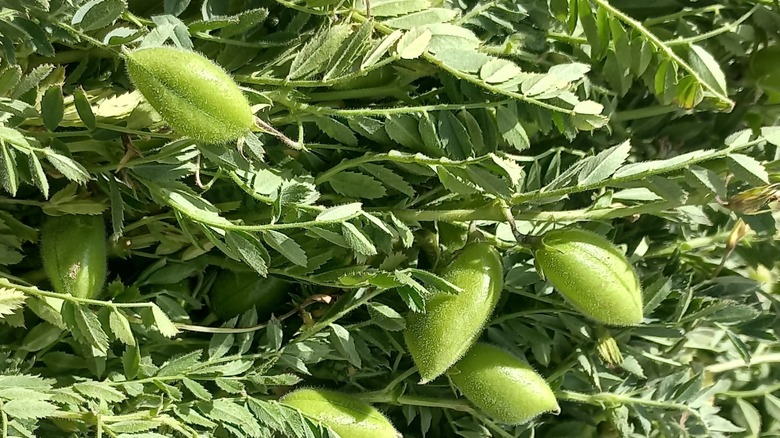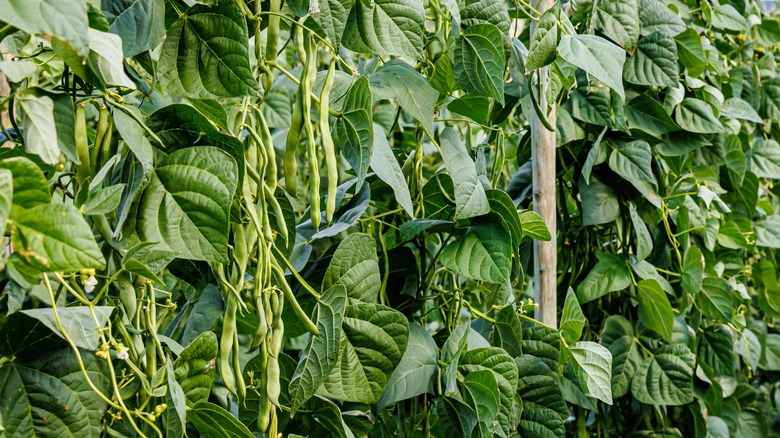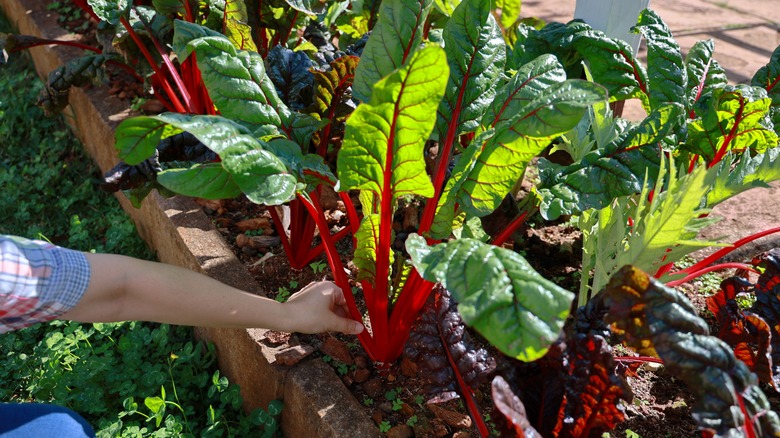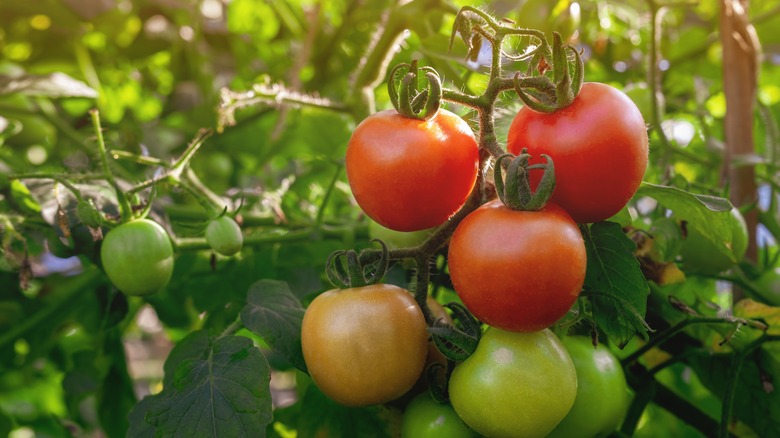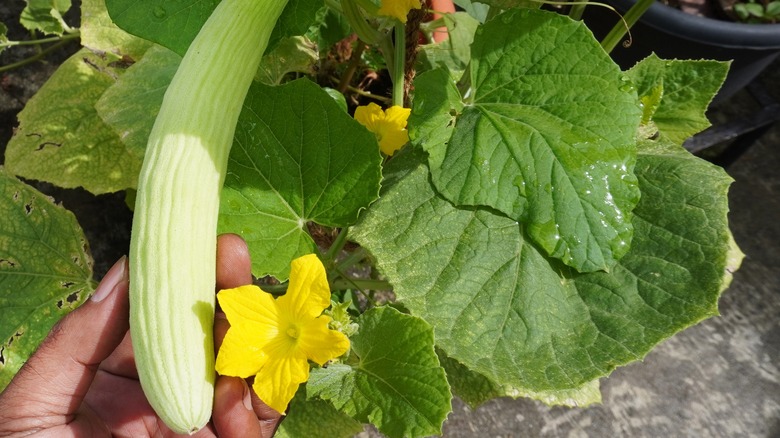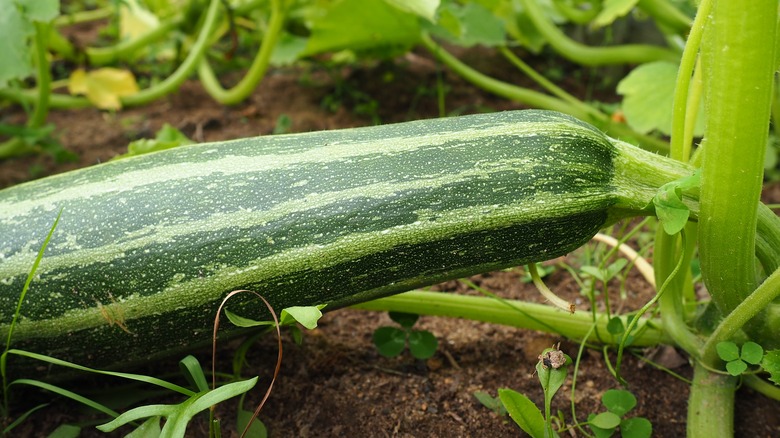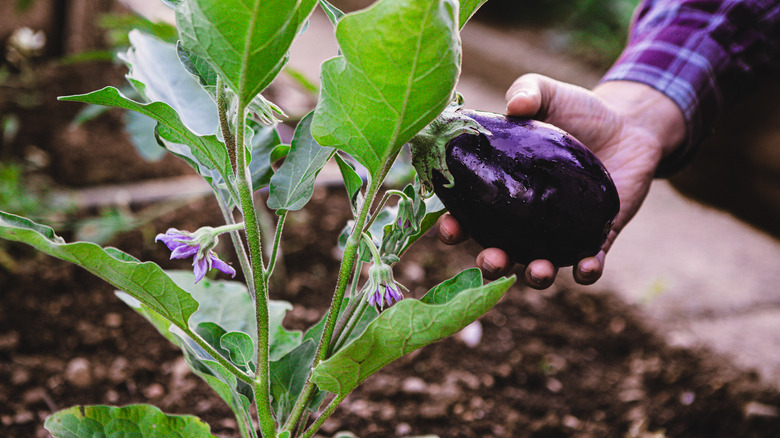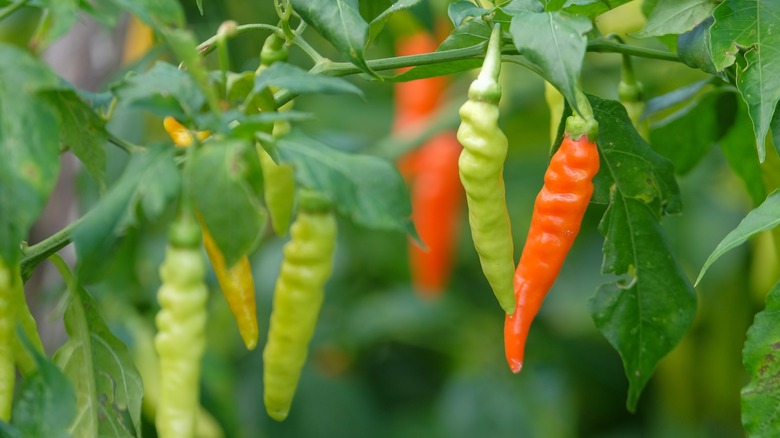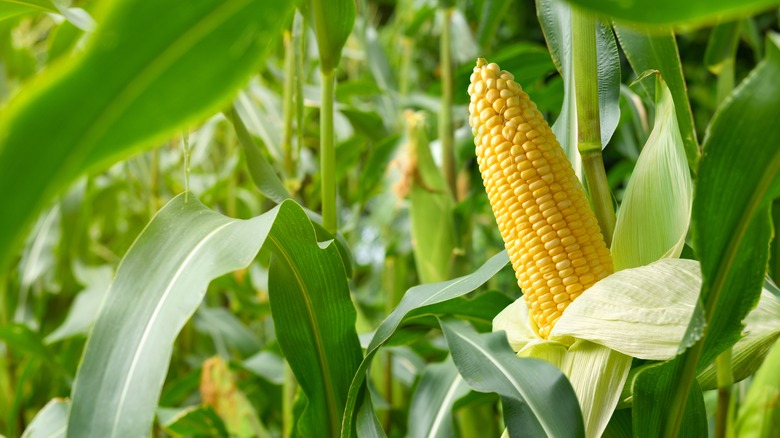12 Drought-Tolerant Vegetables To Add To Your Garden
Droughts of the same magnitude as the "Dust Bowl" era of the 1930s and 1950s have not recurred in recent decades. Nonetheless, in the first quarter of the new century, between 10% and 70% of the U.S. landmass has experienced drought conditions, per the United States Environmental Protection Agency. If you're a home gardener, this means that every growing season is a toss up — you never know whether a long dry spell will descend on the region and kill your crops. If you want your home garden to produce a reliable supply of crops with minimal watering, you must consider growing vegetables that resist arid conditions well.
Fortunately, there is an abundance of veggies that have good degrees of drought tolerance. From root vegetables like beets and carrots to certain varieties of tomatoes, cucumbers, and squash, you can populate your garden with a rich selection of plants that will reward you at harvest time even in a dry year. Below, we've curated a list of 12 drought-tolerant vegetables that will thrive in your garden even when water is scarce.
1. Beets
Plant beets in your garden and you'll get a drought-tolerant vegetable to use in salads, pickles, and soups come harvest time. Beets are always grown from seed and need fertile, well draining soil. Once the soil temperature surpasses 40 degrees Fahrenheit, create small, 1-inch-deep holes in the soil, spacing them a few inches apart, and sow the seeds. However, despite their overall drought-tolerance, beets are susceptible to drought stress in the first six weeks after germination, so water them frequently at this stage. You can promote growth by adding a nitrogen-rich fertilizer a month and a half after germination.
2. Carrots
Like other root vegetables, carrots withstand droughts well. However, the best time to plant these drought-tolerant plants is early in the season, so the roots can grow deep and access moisture before summer ushers in dry weather. Fortunately, you can seed carrots directly early enough in the season — as soon as the soil temperature breaches the 40-degrees Fahrenheit mark. Six weeks after seedlings sprout, fertilize them with a nitrogen fertilizer to help the roots get established and grow. Since weeds generally outcompete carrots, be sure to remove them from the soil promptly after noticing their presence.
3. Butter beans (lima beans)
Butter beans' creamy texture makes them a delicious addition to stews and soups, and growing them is simple in a home garden — even one that's prone to periods of drought. Before planting, make sure that the location is sunny and warm. The soil should also be somewhat acidic, fertile, and should drain well. Once the risk of frost is gone, you can sow their seeds 2 inches deep with the eye facing down. Also water the seedlings carefully, as water that gets on the foliage can cause diseases.
4. Garbanzo beans (chickpeas)
Garbanzo beans are the key ingredient in hummus, but they're also yummy in salads and roasted on their own. Chickpeas are drought-tolerant due to their long roots, which can tap into moisture far below the surface. Plant the chickpeas indoors first, then transplant them once the soil temperature is higher than 60 degrees Fahrenheit. Transplant the chickpea seedlings into well-drained and somewhat fertile soil and in a spot that gets lots of direct sun. Seedlings should be given at least 4 inches of space between each other. Expect to harvest the crop in three months.
5. Pole beans
Pole beans are an excellent home garden crop because of their culinary versatility and ability to grow vertically in a tight space. They're also a great crop to grow in a region where dry weather persists. Drought-tolerant varieties include Blue Coco, Garden of Eden, Romano, Louisiana Purple Pod, and Selma Zesta. You can plant beans from seeds once frosts are no longer a threat and the soil temperature is higher than 48 degrees Fahrenheit. The ideal substrate for beans is slightly acidic, well-draining, and moderately fertile. Beans don't need fertilizer because they are nitrogen-fixing plants.
6. Swiss chard
If you enjoy making Middle Eastern or Mediterranean dishes, swiss chard is an excellent vegetable to consider for a drought-prone vegetable garden. It's actually a type of beet, but many typically use the stem and leaves in dishes. Plant swiss chard in a sunny spot with nutrient-rich soil that doesn't retain water. You can sow the seeds as early as a month before the frosts are over, as late as the middle of summer, or stagger the dates to get a continuous supply. Plants should be ready for harvesting one to two months after you plant.
7. Tomatoes
Not all tomatoes weather arid conditions with the same vigor. However, varieties like Caro Rich, Pearson, Stone, and Pineapple are drought-tolerant, and cherry tomatoes are even tastier when given little water. Before planting tomatoes, ensure that the location gets lots of sun and the soil drains well (otherwise, plant them in a raised bed). Start the tomatoes indoors and transplant them only when the seedlings have more than five leaves and the soil temperature is above 60 degrees Fahrenheit. Ensure at least 2 feet of space between plants when transplanting, and use stakes or trellises to support the growing stems.
8. Cucumbers
Cucumbers are one of the most common vegetables that are easy to grow at home as long as you provide them with an adequate trellis system. Armenian cucumbers and lemon cucumbers are the most drought-tolerant varieties, but all cucumbers can produce as many as five fruits per week with minimal irrigation. Plant cucumbers from seeds after the last frost and when the temperature of the planting medium is over 60 degrees Fahrenheit. You can plant the cucumbers in hills or in rows, but the seedlings should have at least a foot and a half of space between them.
9. Squash
If you're looking to grow squash in a garden that sees dry periods, you'll be delighted to learn that many varieties of this crop handle droughts well. Examples include Cocozelle Zucchini, Costata Romanesco, and Cushaw Green-Striped. Starting seeds indoors and transplanting is a bad practice that can easily damage the plants, so it's best to sow the seeds directly in the garden. You can plant once the soil is warmer than 70 degrees Fahrenheit. Trellised squashes need more water than those growing on the ground. Harvest the squashes frequently and don't let large fruits remain on the vine.
10. Eggplant
Like squash and cucumbers, eggplants come in certain drought-tolerant varieties, like Listada de Gandia. Other varieties require a bit more moisture but nothing more than a single weekly watering when there's no rain. You should start eggplants from seeds indoors, ensuring a soil temperature of at least 70 degrees for germination. Seedlings need daily exposures to sunlight, and these should increase in length as the young plants get used to the sun's rays. Transplant them only once nighttime air temperatures stay above 50 degrees Fahrenheit. The plants will continue fruit production after you start harvesting.
11. Cayenne peppers
Cayenne peppers' preferred growing conditions are as scorching as their flesh — this variety adores sun and heat, grows well during droughts, and is a perennial in USDA zones 9 to 11b. Plant cayenne pepper seeds indoors, giving them about six weeks to germinate and mature before the last frost. Then, transplant the seedlings into fertile, well-draining planting medium. As the plants start blooming, you'll notice that withered flowers give way to fruits, which you can harvest green or red. These peppers are vulnerable to Verticillium wilt as well as a range of pests, including aphids and potato beetles.
12. Corn
Given corn's origins in the arid regions of central Mexico, it's no surprise that this vegetable handles the lack of rain without major issues. Drought-tolerant varieties include Anasazi Sweet, Daymon Morgan's Kentucky Butcher, Hopi Blue Flour, and Hopi Pink, among others. Grow your corn patch in a sunny spot where the soil is nutrient-rich, has a pH of 6.0 to 6.8, and drains properly. Plant corn from seed when the soil temperature exceeds 60 degrees Fahrenheit — this ensures quick germination. Corn is ready to harvest when the silks have turned brown and dry.
